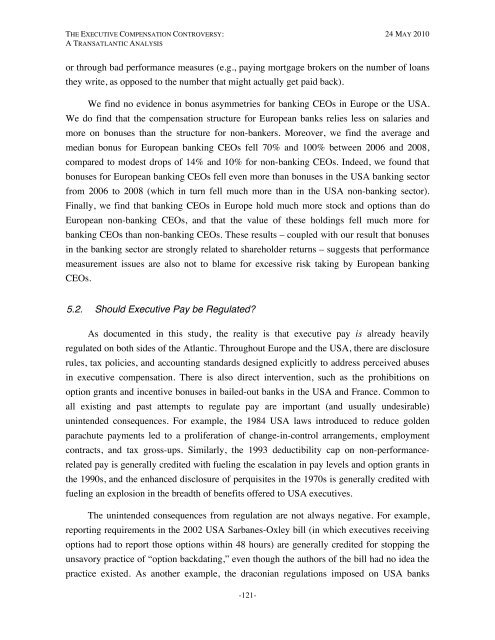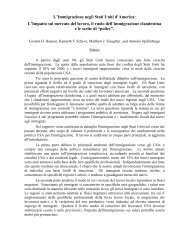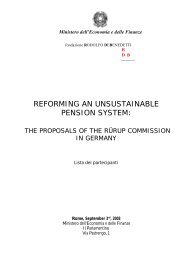The Executive Compensation Controversy - Fondazione Rodolfo ...
The Executive Compensation Controversy - Fondazione Rodolfo ...
The Executive Compensation Controversy - Fondazione Rodolfo ...
You also want an ePaper? Increase the reach of your titles
YUMPU automatically turns print PDFs into web optimized ePapers that Google loves.
THE EXECUTIVE COMPENSATION CONTROVERSY: 24 MAY 2010A TRANSATLANTIC ANALYSISor through bad performance measures (e.g., paying mortgage brokers on the number of loansthey write, as opposed to the number that might actually get paid back).We find no evidence in bonus asymmetries for banking CEOs in Europe or the USA.We do find that the compensation structure for European banks relies less on salaries andmore on bonuses than the structure for non-bankers. Moreover, we find the average andmedian bonus for European banking CEOs fell 70% and 100% between 2006 and 2008,compared to modest drops of 14% and 10% for non-banking CEOs. Indeed, we found thatbonuses for European banking CEOs fell even more than bonuses in the USA banking sectorfrom 2006 to 2008 (which in turn fell much more than in the USA non-banking sector).Finally, we find that banking CEOs in Europe hold much more stock and options than doEuropean non-banking CEOs, and that the value of these holdings fell much more forbanking CEOs than non-banking CEOs. <strong>The</strong>se results – coupled with our result that bonusesin the banking sector are strongly related to shareholder returns – suggests that performancemeasurement issues are also not to blame for excessive risk taking by European bankingCEOs.5.2. Should <strong>Executive</strong> Pay be Regulated?As documented in this study, the reality is that executive pay is already heavilyregulated on both sides of the Atlantic. Throughout Europe and the USA, there are disclosurerules, tax policies, and accounting standards designed explicitly to address perceived abusesin executive compensation. <strong>The</strong>re is also direct intervention, such as the prohibitions onoption grants and incentive bonuses in bailed-out banks in the USA and France. Common toall existing and past attempts to regulate pay are important (and usually undesirable)unintended consequences. For example, the 1984 USA laws introduced to reduce goldenparachute payments led to a proliferation of change-in-control arrangements, employmentcontracts, and tax gross-ups. Similarly, the 1993 deductibility cap on non-performancerelatedpay is generally credited with fueling the escalation in pay levels and option grants inthe 1990s, and the enhanced disclosure of perquisites in the 1970s is generally credited withfueling an explosion in the breadth of benefits offered to USA executives.<strong>The</strong> unintended consequences from regulation are not always negative. For example,reporting requirements in the 2002 USA Sarbanes-Oxley bill (in which executives receivingoptions had to report those options within 48 hours) are generally credited for stopping theunsavory practice of “option backdating,” even though the authors of the bill had no idea thepractice existed. As another example, the draconian regulations imposed on USA banks-121-









